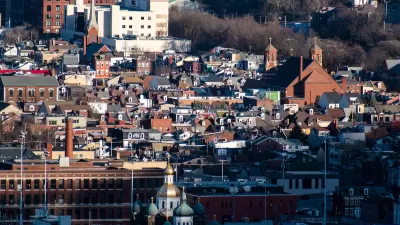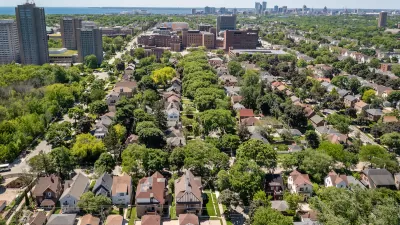Mayor Rahm Emanuel announced an update of the city's 2013 transit oriented development ordinance. The new version of the ordinance would have a sweeping effect on the land uses around transit stations in Chicago.
"The office of Mayor Rahm Emanuel, who proposed and worked with City Council to pass a major TOD ordinance in 2013, unveiled a proposal for a reformed TOD ordinance," according to a post by Yonah Freemark for the Metropolitan Planning Council. For the record, the Metropolitan Planning Council "hails this proposed zoning ordinance as an important step forward in growing our city toward its transit system."
"An initial analysis of the ordinance conducted by MPC shows that the change would more than double the area of land benefiting from increased allowed density, compared with the 2013 ordinance, from 13 million sq. ft. of parcels to 31 million sq. ft. (this represents just a small portion of the city’s total developable area)," adds Freemark. The ordinance would also "increase by more than 10 times the area that would benefit from reduced parking requirements, from 86 million sq. ft. or parcels to 957 million."
The post includes a lot more info on the impacts the proposed ordinance could have enacted. For more information about the city's support of the new ordinance, which could be considered in September, see also a press release from the office of Mayor Rahm Emanuel about the proposed ordinance.
FULL STORY: City of Chicago unveils proposal for 2015 TOD ordinance

Planetizen Federal Action Tracker
A weekly monitor of how Trump’s orders and actions are impacting planners and planning in America.

Chicago’s Ghost Rails
Just beneath the surface of the modern city lie the remnants of its expansive early 20th-century streetcar system.

San Antonio and Austin are Fusing Into one Massive Megaregion
The region spanning the two central Texas cities is growing fast, posing challenges for local infrastructure and water supplies.

Since Zion's Shuttles Went Electric “The Smog is Gone”
Visitors to Zion National Park can enjoy the canyon via the nation’s first fully electric park shuttle system.

Trump Distributing DOT Safety Funds at 1/10 Rate of Biden
Funds for Safe Streets and other transportation safety and equity programs are being held up by administrative reviews and conflicts with the Trump administration’s priorities.

German Cities Subsidize Taxis for Women Amid Wave of Violence
Free or low-cost taxi rides can help women navigate cities more safely, but critics say the programs don't address the root causes of violence against women.
Urban Design for Planners 1: Software Tools
This six-course series explores essential urban design concepts using open source software and equips planners with the tools they need to participate fully in the urban design process.
Planning for Universal Design
Learn the tools for implementing Universal Design in planning regulations.
planning NEXT
Appalachian Highlands Housing Partners
Mpact (founded as Rail~Volution)
City of Camden Redevelopment Agency
City of Astoria
City of Portland
City of Laramie





























